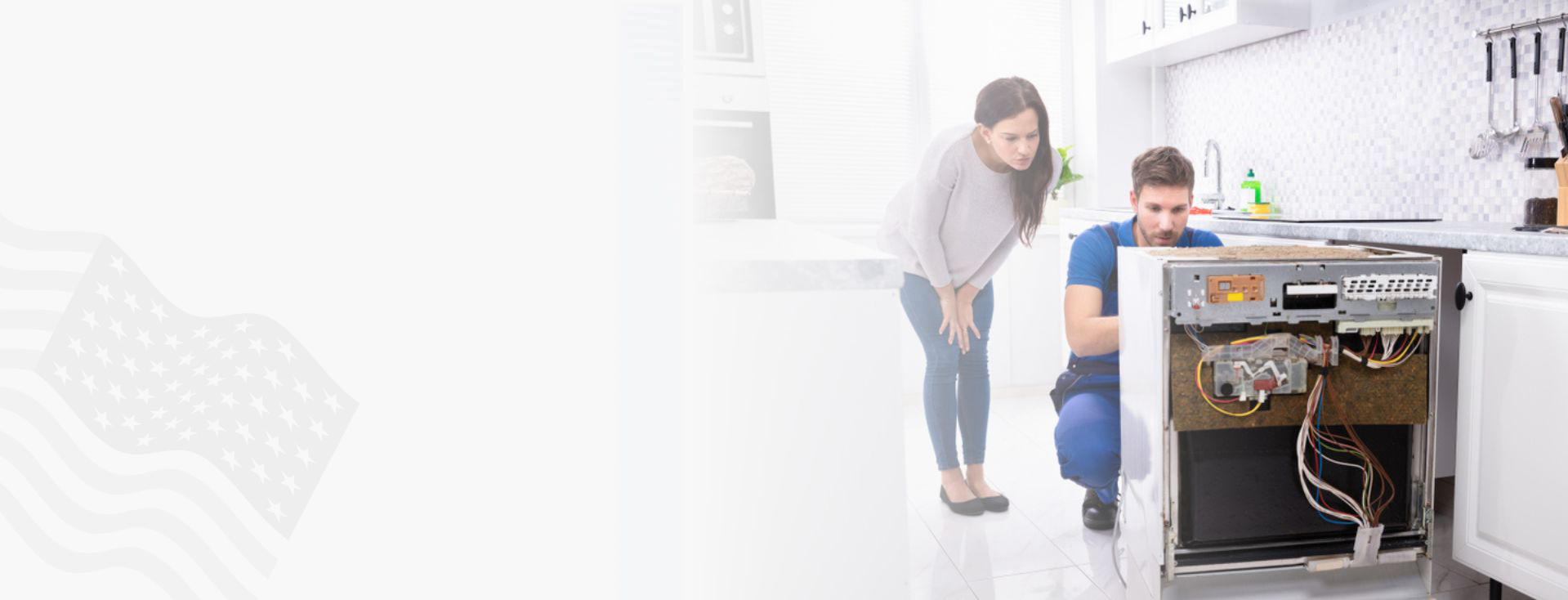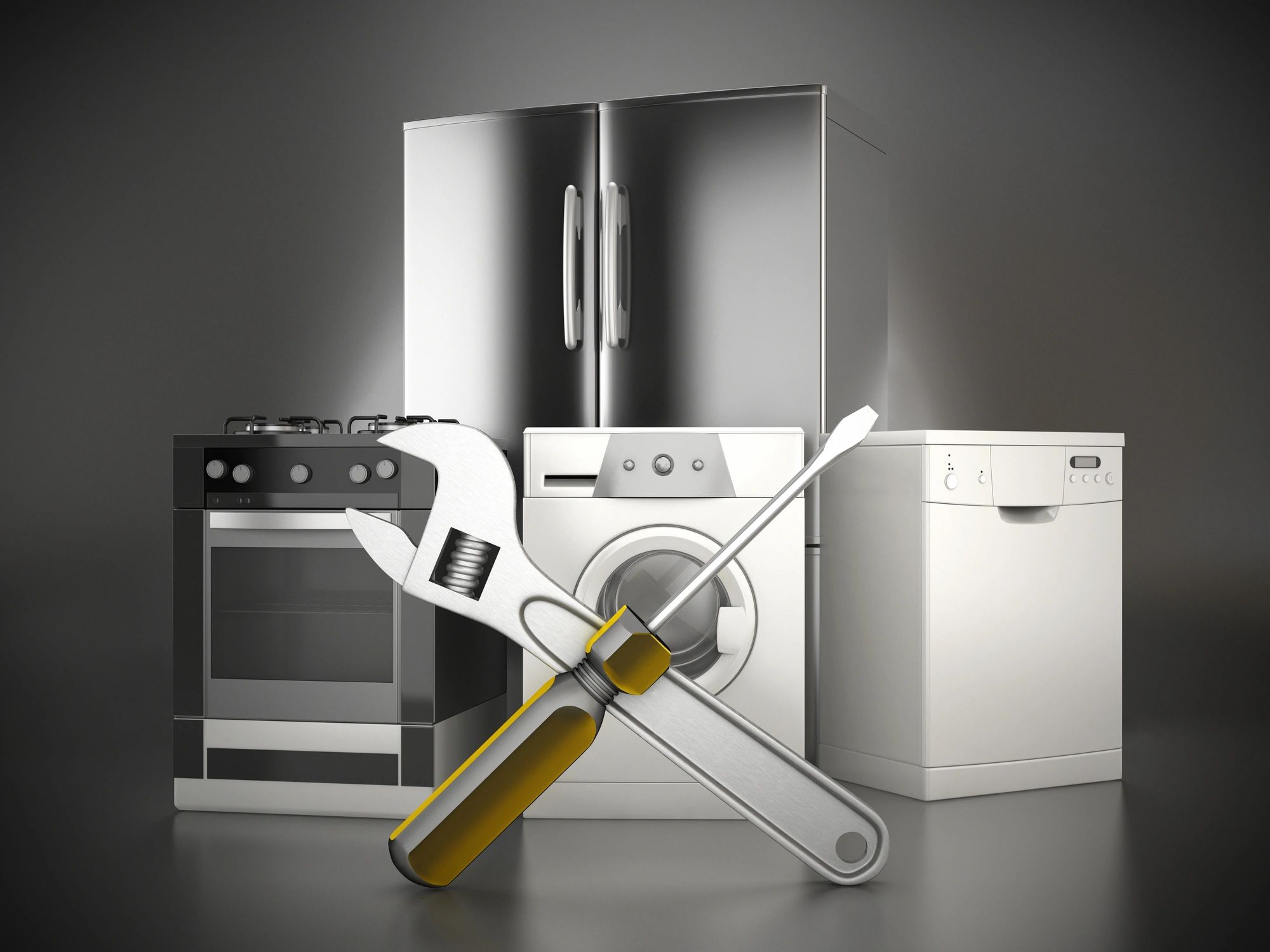The Ultimate Overview to Comprehending Device Repair Work in your home
When your fridge quits cooling down or your stove declines to warm, it can really feel frustrating. Recognizing appliance repair at home can save you time and money. You'll discover to acknowledge signs, utilize necessary devices, and adhere to an organized troubleshooting procedure. Prior to you start, there are important safety and security preventative measures you require to take into account. What are the most typical issues, and exactly how can you fix them? Let's explore the basics.
Common Appliance Problems and Their Symptoms
When your home appliances begin breaking down, it's crucial to recognize the signs early on. Neglecting them can result in larger concerns and expensive repair work. For instance, if your fridge isn't cooling down appropriately, you might notice cozy areas or condensation forming. This can suggest a stopping working compressor or a blocked vent.Your dishwashing machine may show problems via dirty meals or unusual noises during cycles. If you hear grinding or clanking, it's time to investigate.A washing equipment that won't rotate or drain can leave you with soaked laundry, recommending a stopped up drain or a malfunctioning pump.Lastly, if your stove's temperature appears off or it takes permanently to preheat, you may be taking care of a defective thermostat. By remaining sharp to these symptoms, you can deal with concerns before they rise into major fixings.
Crucial Tools for Device Repair Work
When you're taking on appliance repair services in the house, having the right devices is essential. Basic hand devices like screwdrivers and pliers will certainly assist you take apart and take care of numerous home appliances, while electric testing gadgets guarantee you're working securely with electrical wiring. Let's review what you need to begin on your repair trip.
Standard Hand Devices
Having the right tools is essential for reliable device repair service at home. Beginning with a reliable screwdriver set, consisting of both flathead and Phillips kinds, as screws are typical in appliance setting up. Pliers are also important; they assist with gripping, turning, and cutting wires or little components. A set of needle-nose pliers can reach difficult situations easily. You'll require a great adjustable wrench for tightening up or loosening nuts and screws. An utility blade is helpful for cutting via packaging or insulation. Don't forget a strong workbench or surface to securely organize your tools and components. With these fundamental hand tools, you'll be well-prepared to deal with most appliance repair work that come your means.
Electrical Screening Tools
Alongside standard hand tools, electric testing devices play a crucial function in appliance fixing. These tools help you identify electrical problems and assurance devices operate securely. A multimeter is vital; it gauges voltage, current, and resistance, enabling you to determine problems promptly. A non-contact voltage tester is another must-have, letting you find real-time wires without making direct call, boosting your safety. Clamp meters are wonderful for measuring current flow in cables without separating them, conserving you effort and time. In addition, circuit testers can quickly check if outlets are working appropriately. By making use of these tools, you'll streamline your troubleshooting process and enhance your repair service skills, making appliance upkeep a whole lot easier.
Step-by-Step Overview to Diagnosing Device Issues
When your device breaks down, it can be aggravating, however diagnosing the issue doesn't have to be frustrating. You'll find out to determine common issues and apply effective troubleshooting strategies. Allow's walk through the steps to obtain your appliance back in functioning order.
Typical Appliance Issues

Fixing Techniques Explained

Repairing Major Kitchen Devices: A Closer Look
Have you more tips here ever asked yourself exactly how to tackle common problems with your kitchen devices? Repairing significant kitchen home appliances like fridges, stoves, and dish washers can be much easier than you assume. Begin by identifying the problem-- whether it's a fridge not cooling down or a stove that won't warm. Frequently, a straightforward reset or inspecting the power source can fix the issue.For fridges, tidy the condenser coils and check the door seals. If your oven's not heating, evaluate the burner and thermostat. Dish washers might simply require a tidy filter or a reset to get them back at work. Constantly unplug the home appliance prior to diving right into fixings to ensure your safety.Don' t forget to consult the user guidebook for details repairing ideas connected to your version. With a little bit of perseverance and the right tools, you can confidently deal with appliance fixings and conserve money while doing so!

Repairing Washing Appliances: Tips and Techniques
When your washing devices start acting up, it can feel overwhelming, yet troubleshooting them doesn't need to be a hassle. Begin by inspecting the power supply. Validate the appliance is connected in and the electrical outlet is operating. Next, examine the door or cover switch; a malfunctioning button can prevent the device from operating.For washing machines, if it's not rotating, look for out of balance loads. Redistributing the clothing could address the concern. If your dryer isn't heating, clean the lint filter and inspect the air vent for blockages.Listen for uncommon noises; they can indicate a problem. If your appliance is leaking, check the hose pipes for cracks or loose links. Record any kind of error codes shown on digital displays, as they can lead you read this in determining the problem. Ultimately, consult the user manual for specific troubleshooting suggestions connected to your version.
Safety Preventative Measures to Take Throughout Repair works
Before you begin any type of device repairs, it's necessary to prioritize safety to avoid accidents or injuries. First, disconnect the appliance or shut off the breaker to ensure no power reaches it while you work. Use insulated tools to reduce the danger of electric shock. Wear safety goggles and gloves to secure yourself from sharp edges or debris (Fixes washers and dryers Oro valley Dependable Appliance Repair).Make specific your work area is tidy and well-lit, so you can see what you're doing. Maintain kids and pets far from the location to prevent interruptions and possible hazards. If you're taking care of gas appliances, be additional mindful; check for leaks prior to proceeding.Take your time, and do not hurry through fixings. If you feel unclear about any step, it's far better to pause and study than to guess. Following these preventative measures will help develop a much safer setting for your do it yourself device repair project
When to Call a Specialist for Help
Exactly how do you check out here understand if it's time to contact an expert for device repair services? If you have actually attempted standard troubleshooting without success, it's a clear indication. For example, if your appliance still won't start or reveals uncommon sounds after resetting it, do not think twice to look for professional help.When you discover leaks, smoke, or burning smells, prioritize security and call a pro instantly. These issues can lead to even more substantial damages or posture risks to your home.Also, if your device is under service warranty, calling an expert is typically the best course. They can assure that fixings will not nullify your guarantee, saving you money in the long run.Finally, if you're unclear or uncomfortable with complex repair work, it's smart to leave it to the professionals. Bear in mind, dealing with complicated issues without the ideal proficiency can lead to costly blunders. Count on a professional when unsure!
Often Asked Questions
Exactly How Can I Stop Appliance Troubles in the Future?
To stop appliance troubles in the future, you ought to perform normal maintenance, look for wear and tear, tidy filters, and prevent overloading. Remaining positive will certainly assist extend their life expectancy and keep them running efficiently.
What Are one of the most Usual DIY Device Repair Work Mistakes?
You might forget security preventative measures, avoid troubleshooting steps, or make use of inaccurate tools when trying do it yourself appliance fixings. Rushing the procedure or overlooking producer guidelines can lead to even more significant concerns and costly blunders. Stay client and educated!
How Do I Know if a Part Demands Replacement?
You can inform if a part requires replacement by examining for uncommon sounds, leakages, or inconsistent performance. If the appliance has a hard time to run properly or shows visible damage, it's likely time for a substitute.
Can I Make Use Of Generic Parts for Appliance Repair Works?
Yes, you can utilize common components for device repair work, yet ascertain they're compatible - Dependable Refrigeration & Appliance Repair Service Washing Machine Repair. Generic parts might save you money, but they can influence efficiency or durability, so evaluate your options thoroughly before making a decision
What Service Warranties Cover Device Services?
The majority of home appliance guarantees cover repair work for manufacturing defects, but they often exclude damages from abuse. Inspect your guarantee terms very carefully, as some may need using certified service technicians and initial parts for coverage to stay legitimate.